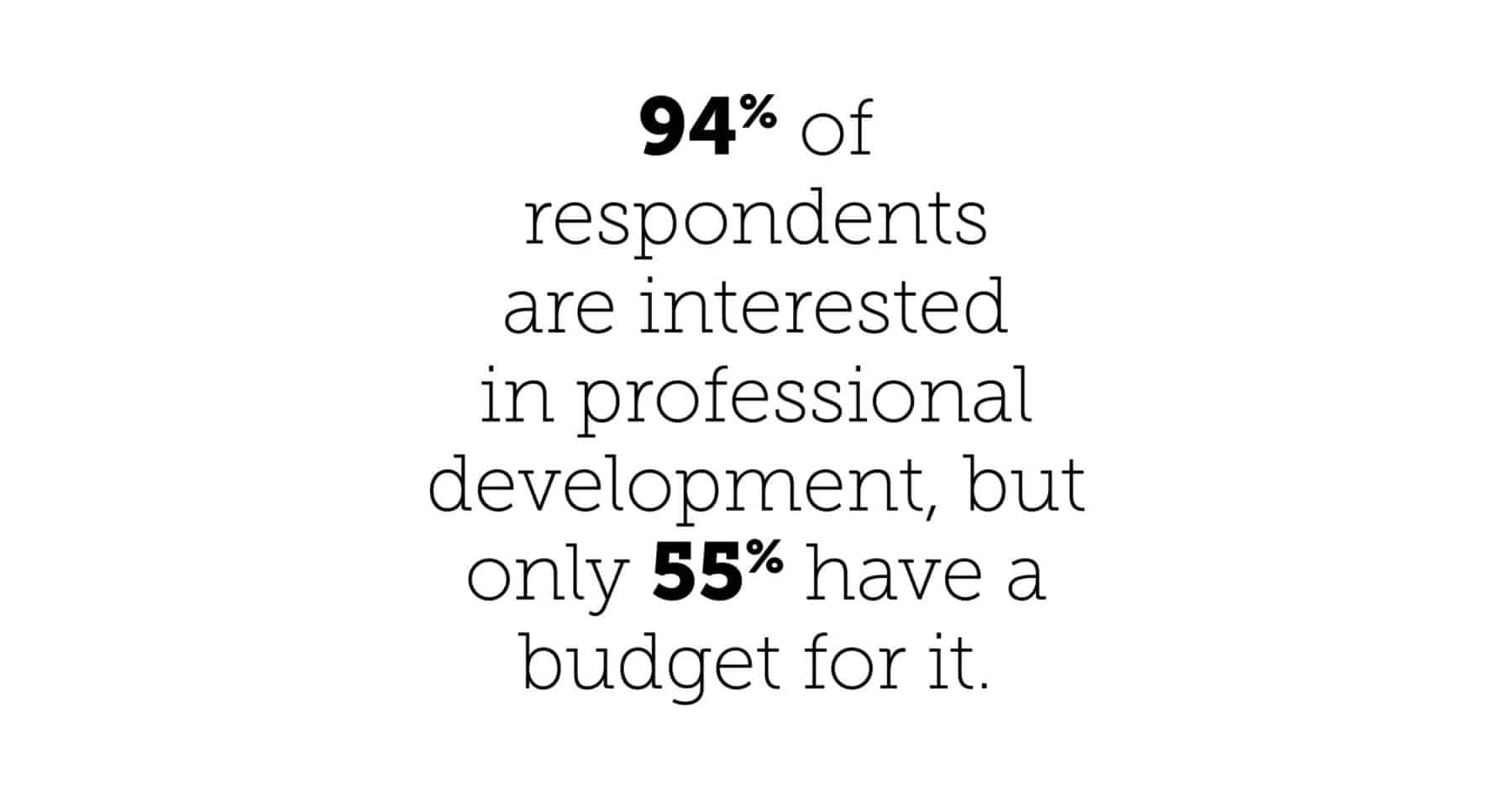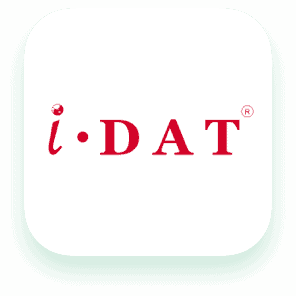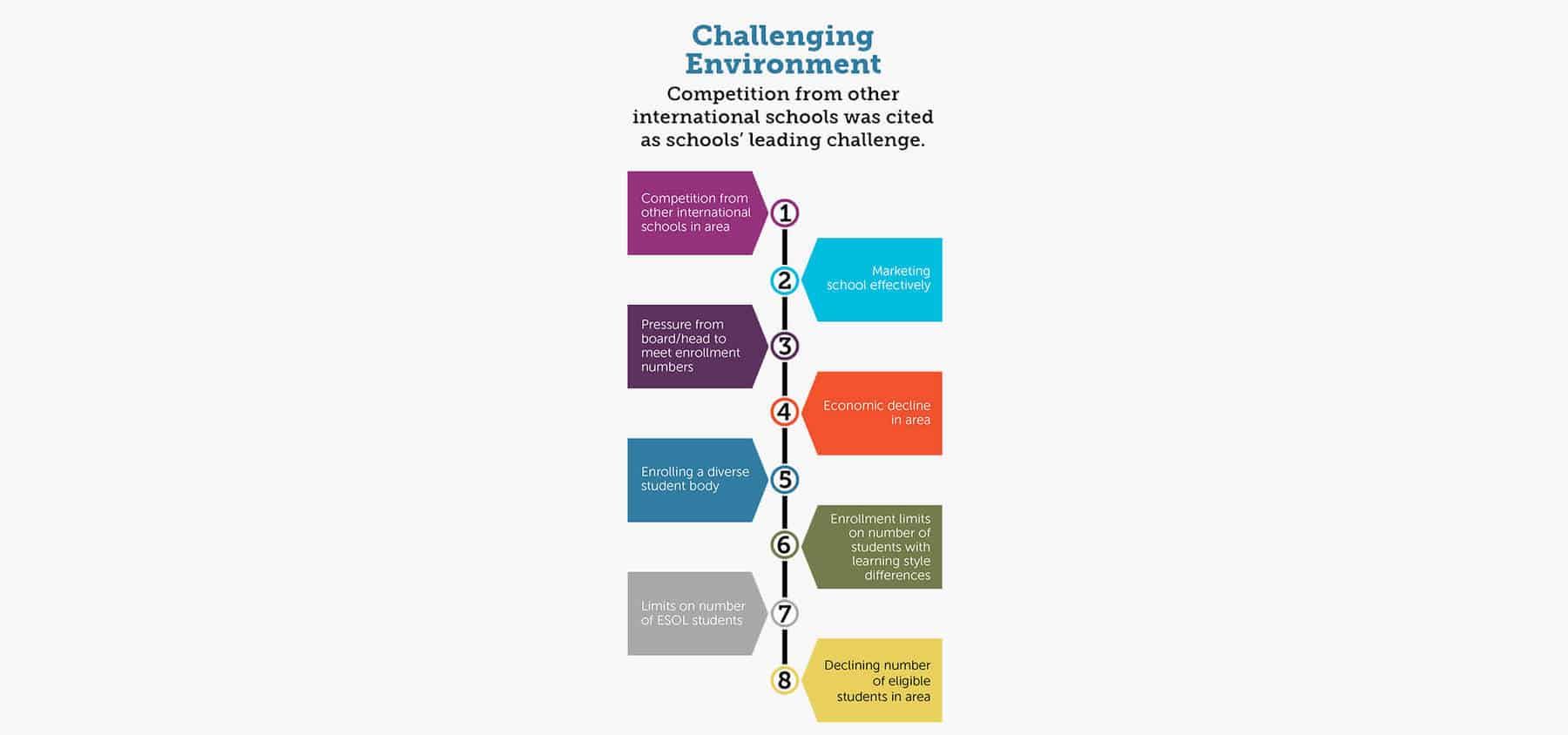As Kevin Ruth, Executive Director of ECIS, asserted, “The past five years have influenced schools differently, depending on location. Certain cities and locales have seen no disruption whatsoever, while others have experienced tremendous growth, while still others have experienced painful declines…For those schools experiencing enrolment contractions, their challenge is budget readjustment, which means painful staffing adjustments, among other areas such as possibly increasing funds for marketing and advertising in the face of declining revenue due to declining enrolment.” This growth also indicates that international school enrolment professionals must be prepared to navigate and manage the competitive landscape, while possessing the strategic skills that contribute to school sustainability.
In an effort to understand the situation of the international school admission professional, The Enrollment Management Association reached out to international school associations ECIS, EARCOS, NESA, COBIS, AISA, ISC Research Ltd., and seasoned industry professionals to disseminate a survey that led to the publication of its November 2015 International School Admission Industry report. The Enrollment Management Association is a membership organization for independent school admission professionals and purveyor of the SSAT admission test.
The Survey
The survey collected critical data on admission personnel, process, and operation, the cost of tuition and the degree of financial aid offered at international schools, the challenges international schools face in terms of recruitment and selection of students, and key issues relating to governance and decision making within and across international schools. Marketing in International Schools
Marketing in International Schools
Unlike independent schools in North America, the survey reveals that only a small proportion of international schools are actively engaged in outreach activities designed to attract and refer students to their schools. Sixty-four percent (64%) of respondents say they make no visits to the human resource offices the companies with whom they are closely tied, though larger schools and those in China are slightly more likely to do so. Sixty-three percent (63%) do not visit any corporate relocation companies, and that same proportion make no visits to feeder schools.
The survey results indicate that international schools regard word-of-mouth and onsite marketing, such as referrals from current and previous families and school tours, as the most effective recruitment tools. Perceived effectiveness is much lower for campus videos, relocation agents, HR managers, social media, and view books/newsletters/magazines. Given the role of the school tour, it is not surprising that, according to survey respondents, at least seven-in-ten applicants visit the school before acceptance.
The Challenges of Rolling Admission and Assessment
Unlike most of their North American counterparts who utilize fixed application deadlines, 89% of international schools have rolling admission deadlines. Rolling admission can create more challenging situations for admission professionals, as application volume can vary in inconsistent ways. This requires admission offices to capture month-over-month funnel metrics and more nuanced data analyses when looking at yield projections and forecasting. According to the survey, the greatest applicant assessment challenges faced at international schools are assessing special education needs (29%), determining the level of English language proficiency (25%), assessing behavior/ character (22%), and differentiating the relative strength of the student’s current academic program (21%). Given the global community’s great interest in international schools, it is no surprise that more than three-quarters of international schools (77%) require an English proficiency test. Yet, nearly half of the schools reporting (43%) use an assessment that was created in-house.
The Competition
The greatest perceived challenge facing admission at international schools is competition from other international schools in the area. Marketing the school effectively, pressure from boards/heads to meet enrolment numbers, dealing with economic decline in the area, and enrolling a diverse student body are also of great concern. Despite the growing competition, 53% consider the outlook for their enrolment growth to be very good/favorable; 27% consider the outlook good; and only 20% consider it fair or poor. Competition will surely remain the main challenge, as the demonstrated global interest in international schools will invite even more entries to the market.
Additionally, some international schools must adhere to enrolment restrictions from local governments seeking to preserve their own education systems. However, nearly two-thirds of international schools (63%) report that there are no enrolment restrictions imposed by their host countries, while others have restrictions on the number of in-country passport holders (16%), don’t allow in-country passport holders at all (7%), or have some other restriction (14%). Restrictions are most widespread in Asia (57%).
No Seat at the Leadership Table?
Another surprising finding is that, for a majority of survey respondents, there is no seat for admission at the proverbial leadership table. Over half (59%) are not considered senior administrators at their schools; 60% have no role in setting tuition; 47% have no role in setting the financial aid budget; and only 20% regularly attend board meetings. Perhaps even more startling is that only 29% of the admission leaders responding to the survey make the final decision about which students get admitted to their schools. Given this data, it seems critical to evolve the work of admission within the international school community. As The Enrollment Management Association challenged its domestic member heads of school to view their admission leaders as their schools’ “chief revenue and relationship officers,” the same must be true for international school leaders. Indeed, international schools are even more tuition-dependent than their colleague independent schools in North America.
A Need for Professional Development
The survey also showed that the vast majority of survey respondents (91%) are interested in professional development opportunities. Communications (66%), marketing (64%), and the use of data to drive decision making (60%) are top areas of interest in skill development among respondents. However, although 91% are interested in professional development, only 59% have a budget allocated for it.
The data in this report indicates the need to transform the work of admission within the international school community. Admission directors must advocate for themselves to join board discussions, partner with the head of school on clearly-defined metrics, and develop competencies in business analytics, finance, and marketing. A critical component to this is a strategic plan for professional development growth. Recommendations include becoming a data expert on market and admission trends, creating a public relations campaign to market your department’s vital role, communicating enrolment and recruitment trend data to school leadership, advocating for a role in the financial aid and tuition process while honing data and finance skills, and securing adequate funds for your team’s professional development.
To view the full report, visit www.enrollment.org/intl-admission.
















 All Services
All Services


